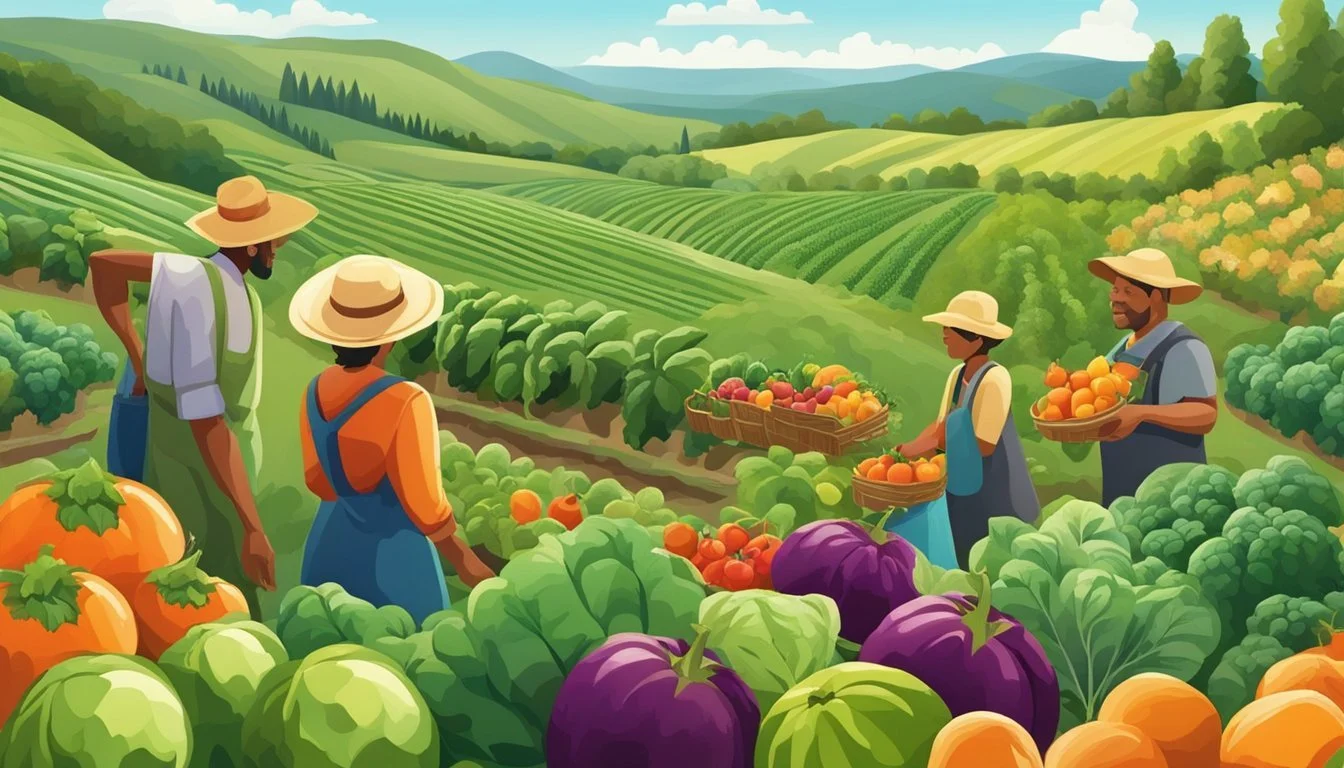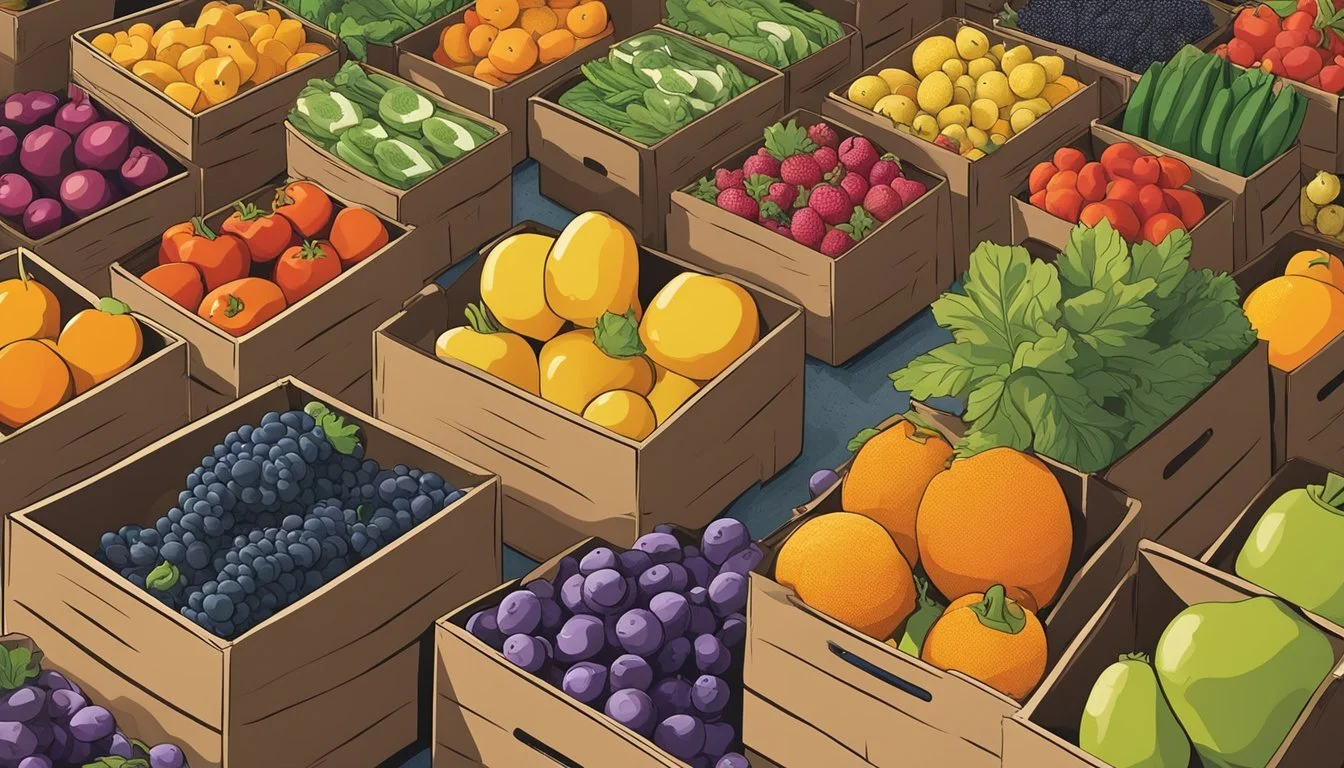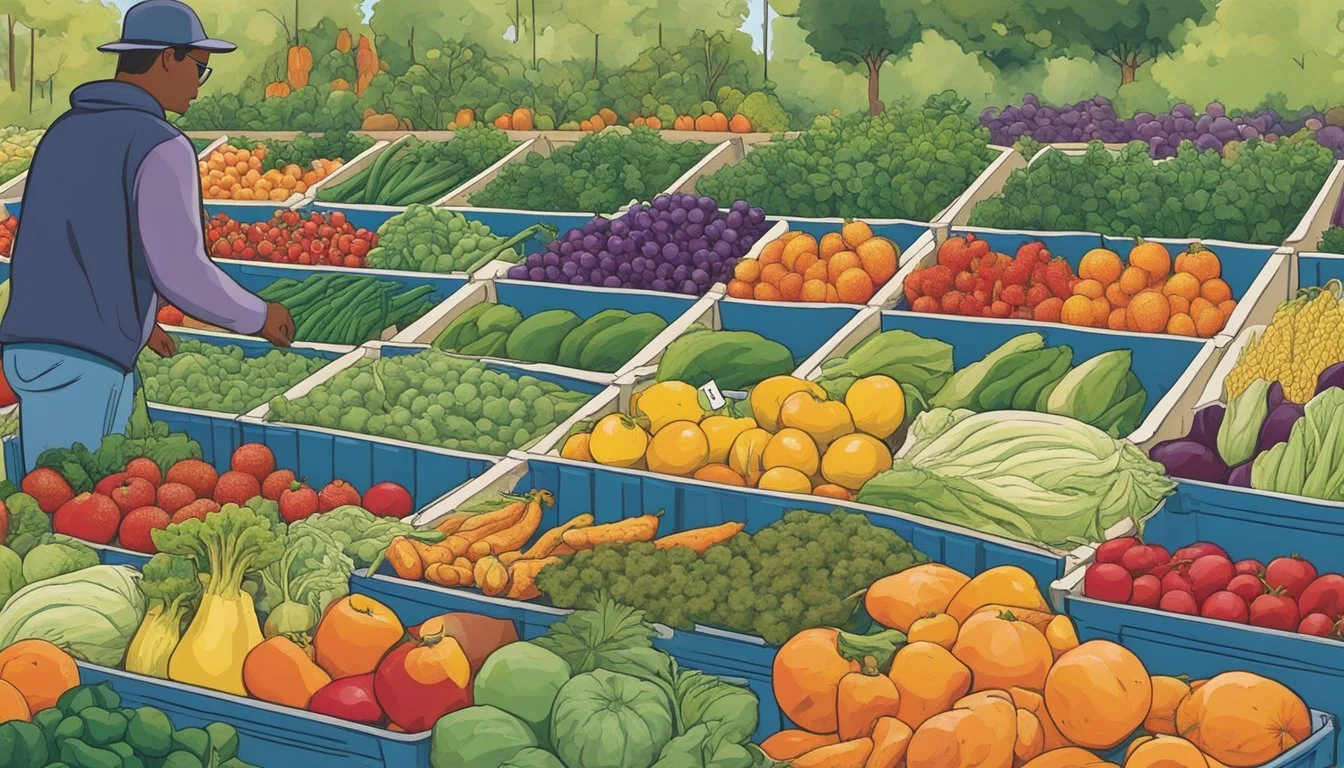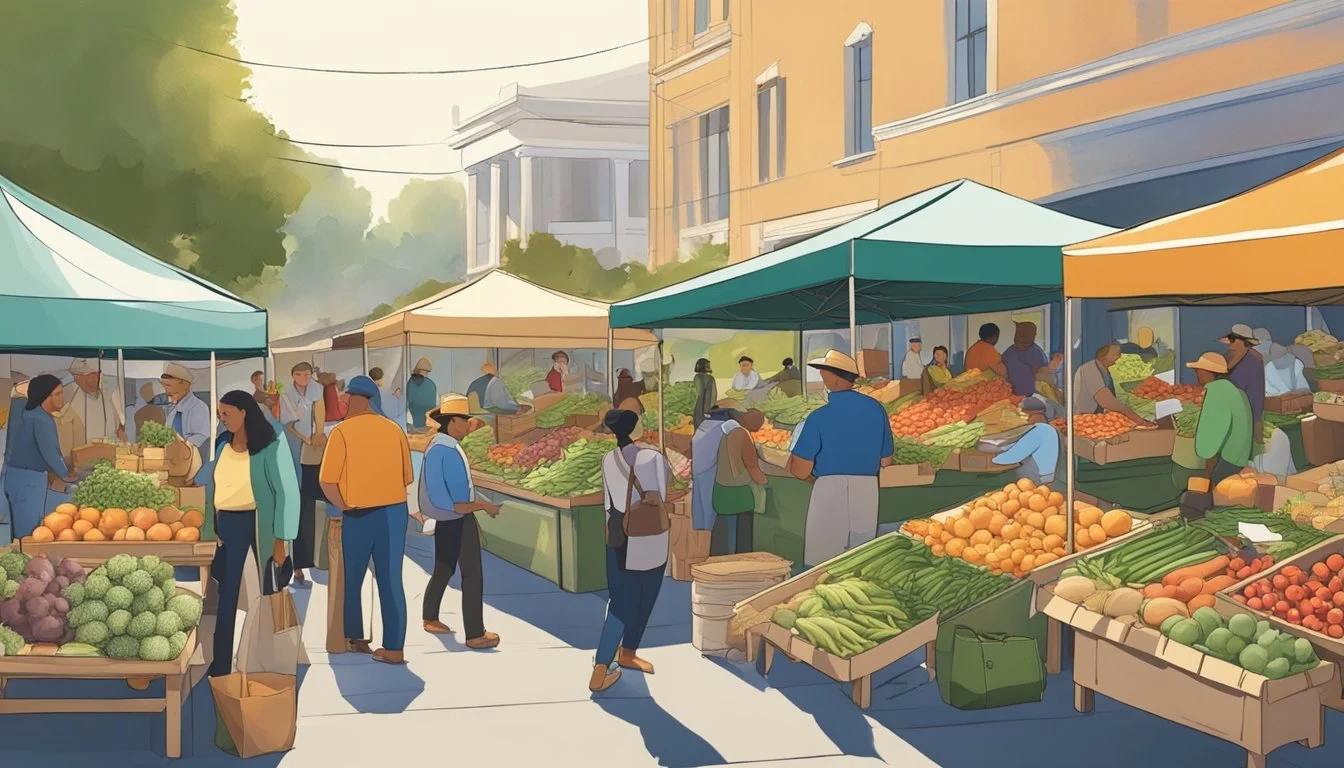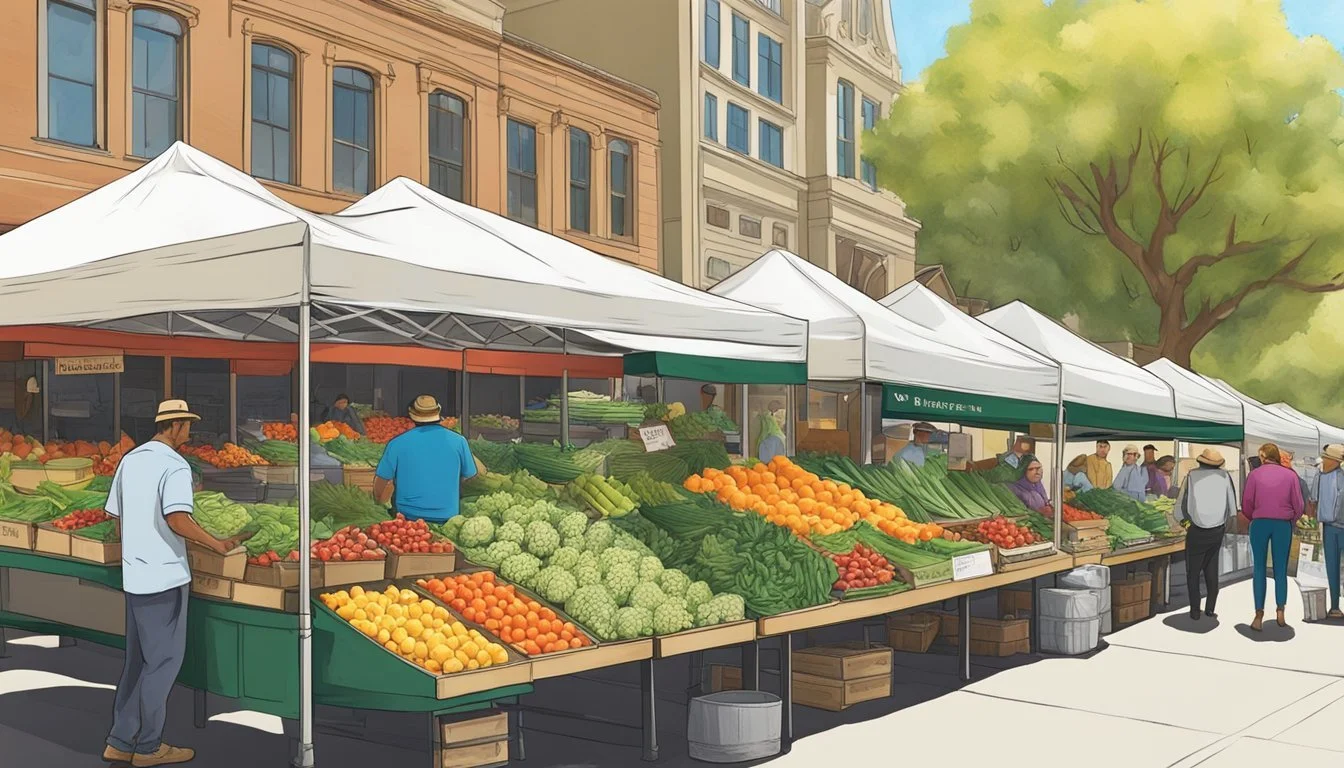Community Supported Agriculture (CSA) in San Jose, CA
A Local Guide to Fresh Produce Partnerships
Community Supported Agriculture (CSA) is flourishing in San Jose, California, reflecting a collective drive towards fresher, local, and more sustainable food sources. CSAs represent a partnership between area residents and farmers, where consumers buy shares of a farm's harvest in advance. In return, they receive a regular supply of seasonal produce, thus sharing the risks and bounties of agricultural production. This model fosters a closer connection between people and the food they eat, grounding the economy of food in community and environmental well-being.
In San Jose, a city known for its technological edge, residents are turning to these agricultural collaborations as a means to reconnect with the land and promote healthier lifestyles. Local farms offer a variety of CSA programs, providing members with access to a weekly or bi-weekly assortment of vegetables, fruits, and sometimes even eggs, cheese, or meat from pasture-raised animals. The region's mild climate and fertile soil facilitate a year-round growing season, enabling farmers to supply a rich diversity of produce.
The rise of CSAs in San Jose also signals a shift towards sustainability and ecological responsibility. Farms engaging in CSA programs often utilize organic or beyond-organic farming techniques, emphasizing soil health, water conservation, and energy efficiency. As consumers become shareholders in the agricultural process, they become more invested in supporting practices that ensure long-term stewardship of the land. This collaboration between local farmers and the community not only secures fresh food but also weaves a stronger fabric of mutual support and sustainability in the Bay Area.
Benefits of CSA
Community Supported Agriculture (CSA) programs in San Jose, CA, offer multifaceted benefits that ripple through the community, environment, and local economy. From farm-fresh produce to strengthening food security, CSA impacts various aspects.
Fresh and Seasonal Produce
CSAs provide members with fresh vegetables and fruit that capture the peak of flavor and nutrition. It means vegetables and fruits are picked when they're ripe and full of taste and vitamins, unlike produce that might have traveled thousands of miles.
Supporting Local Farmers
Joining a CSA supports local farms and farmers by providing them with a stable customer base and upfront capital. This relationship helps maintain small farms and bolsters the local economy.
Health and Nutrition
CSA members benefit from high-quality, nutrient-dense products. Often, the produce is organic or grown using sustainable methods, which can contribute positively to members' health.
Environmental Responsibility
By participating in a CSA, members support farming practices that minimize harm to the environment. Local farms often use organic methods, reduce transport emissions, and promote land and water conservation.
Building Community Engagement
CSAs foster community through shared commitment to local farming. This engagement might include farm visits, events, and a connection with the food's source.
Economic Impact and Food Security
A strong CSA program can bolster the local economy and food security. Money spent on CSAs circulates locally and can provide affordable options through SNAP partnership programs.
Education and Awareness
CSAs often lead to enhanced awareness about food and farming. They provide educational opportunities, encourage research, and drive a conversation about sustainable, nutritious food choices.
Access to Diverse Products
CSA members typically enjoy a wider range of produce and other farm products like eggs, cheese, flowers, and herbs. This variety enriches the diet and introduces consumers to new, locally grown food items.
How CSA Works in San Jose
Community Supported Agriculture in San Jose operates through a model of direct engagement between local consumers and farms. This approach encourages upfront payment for a season's worth of produce, fostering a stable and supportive relationship between members and farmers.
Membership and Subscription
Membership to a CSA in San Jose typically requires consumers to pay in advance for a subscription. This financial model ensures that local farmers receive support upfront, covering the anticipated costs of production. A subscription often involves a commitment for the full growing season, which aligns with the harvest period of most crops.
What to Expect in a CSA Share
A CSA share usually consists of a diverse assortment of locally grown fruits and vegetables. Depending on the farm, the share can also include other farm products like eggs. The contents of a share are seasonal, varying throughout the year according to what is currently being harvested. Most shares are designed to supply an average family for a week.
Understanding CSA Schedules
The delivery schedule for CSA shares in San Jose is predefined and can be structured on a weekly or monthly basis. This schedule ensures that members receive the freshest seasonal produce as soon as it's available. The consistent delivery day each week or month helps members plan their meal preparations around the freshest, seasonally available ingredients.
Selecting the Right CSA Program
When exploring CSA options in San Jose, CA, individuals should seek programs that align with their preferences on farming practices, produce variety, share size, and logistics.
Assessing Farm Practices
Selecting a CSA that shares one's values regarding organic and sustainable farming is crucial. Consumers should inquire if the farm is Certified Organic or employs organic methods. Robust sustainable practices like crop rotation, natural pest control, and soil fertility measures can affect the quality of the produce offered.
Considering Variety and Share Size
Customers often prefer a diverse selection of vegetables and fruits in their CSA share. Before subscribing, they should consider if the farm provides a range of produce options suitable for their cooking habits. The size of the share is equally important; options generally range from individual sizes to larger family-sized shares.
Delivery and Pickup Logistics
Efficient delivery and pickup logistics are key for a seamless CSA experience. Subscribers must verify:
Delivery Day: Which day(s) of the week are the shares delivered?
Pickup Locations: Can they conveniently access the pickup points?
Schedule: Is there flexibility in the subscription to accommodate travel or changes in schedule?
Choosing a CSA with a logical and convenient delivery system ensures that fresh produce is consistently available without causing disruptions to one's routine.
Financial Aspects of CSA
Community Supported Agriculture (CSA) in San Jose, CA presents unique financial considerations for both consumers and producers. Members must understand the cost of membership alongside the payment structures that support local agriculture.
Cost Analysis of CSA Membership
Membership costs in a CSA can vary significantly based on several factors including the length of the subscription, the quantity of produce, and the manner in which the produce is grown and delivered. Typically, members buy shares in a farm's seasonal production and in return receive a weekly or bi-weekly box of fresh produce. These shares for San Jose residents might fluctuate annually, but they assure a fresh supply of local, often organic, produce.
Example Membership Cost: $500 for a 20-week subscription
Share Size: Full-share suitable for a family, half-share for individuals or couples
Included Value: Fresh, seasonal produce equivalent to or exceeding store pricing
Understanding Payment Structures
The payment structures in CSA are built around the concept of mutual commitment. Most CSAs in the San Jose area require payment upfront before the start of the growing season. This initial capital helps farmers to plan and fund the upcoming harvest, covering costs for seeds, equipment, and labor.
Payment Options: Lump sum, Installments
Financial Aid: Some CSAs offer sliding scale fees or payment assistance for low-income households
Cancellation Policy: Non-refundable but shares can sometimes be transferred
The financial relationship in CSA is straightforward: members invest in the farm and the farm provides a consistent supply of fresh produce, presenting a tangible value proposition for both parties. The subscription model secures a committed market for farmers and a source of food for members, exemplifying a self-sustaining support system within the community.
Challenges and Solutions for CSA
In the context of Community Supported Agriculture (CSA) in San Jose, California, stakeholders face a myriad of challenges that demand innovative solutions to ensure sustainability, adaptability, and satisfaction on both sides of the market.
Addressing Common CSA Challenges
Challenges encountered by CSAs are multifaceted, often involving supply, weather, and demand fluctuations. Weather, a critical yet unpredictable factor, directly impacts supply, posing a threat to the regularity and volume of crop yields. CSAs must also navigate varying customer demand which can lead to overproduction or underproduction.
Solutions:
Supply Chain Adaptation: To mitigate these risks, CSAs can diversify their crop selections to include those with different growing cycles and weather tolerances.
Responsive Planning: Developing a responsive supply chain allows for quick adjustments to production based on weather forecasting models.
Customer Demand Balancing: Implementing a flexible subscription model can align production more closely with customer demand, thereby reducing waste.
Adapting to Customer Needs
Achieving adaptability in a CSA involves two-way communication between providers and customers to better understand feedback, preferences, and demand.
Solutions:
Regular Feedback Mechanisms: Gather feedback through surveys or direct communication channels, allowing adjustments to crop selections and quantities.
Preference Adjustments: Adapt the selection of crops to align with evolving customer preferences and sustain demand.
Tailored Subscriptions: Offer different subscription options to provide flexibility, such as customizable shares or variable frequencies of delivery.
By addressing these challenges with proactive and customer-centric solutions, CSAs in San Jose can build a resilient system that supports both local agriculture and community needs.
Marketing and Promotion for CSAs
Community Supported Agriculture in San Jose, CA thrives on effective marketing and promotion strategies. CSA operators maximize demand through targeted outreach, aligning with the community's preference for fresh, locally-sourced produce.
Utilizing Online Platforms
CSAs in the Bay Area often leverage online directories like LocalHarvest to increase visibility. Listings on these platforms provide potential subscribers a way to easily locate and connect with their local CSA. Social media is another pivotal online tool; it serves as an avenue for real-time updates and interactions. CSA farmers effectively utilize platforms such as Facebook and Instagram to showcase their produce, share stories from their farms, and build relationships with their community. This digital presence not only bolsters their marketing efforts but also supports ongoing promotion and customer engagement.
Key Channels of Online Marketing:
Profiles on CSA directories
Regular posts on social media
Email newsletters
Community Events and Farmers Markets
CSAs strengthen their local presence by participating in community events and farmers markets in the Bay Area. These venues act as direct marketing channels where farmers can interact with the community, sign up new members, and promote their CSA subscriptions. In-person events provide valuable opportunities to distribute samples, discuss the benefits of joining a CSA, and educate the public on sustainable agriculture.
Events Marketing Strategies:
Booth setup at local farmers markets
Hosting or joining community agricultural events
Engaging with local food movements and festivals
Recipes and Cooking Tips
When Community Supported Agriculture (CSA) boxes arrive brimming with fresh fruits and vegetables in San Jose, subscribers often seek creative ways to make use of the seasonal bounty. Cooking with CSA ingredients means adapting to what's fresh and available, and it can be an exciting culinary venture.
For robust greens like Swiss chard or kale, sautéing with garlic is a simple yet flavorful technique. Subscribers can tear the leaves into bite-sized pieces and sauté them in olive oil with minced garlic and a pinch of salt. This method releases the natural sweetness of the greens and complements their earthy tones.
Summer squash and zucchini can be spiralized or sliced thinly to create a delicate base for salads or as an alternative to pasta. Add a squeeze of lemon, fresh herbs, and a touch of extra virgin oil for a fresh, light dish.
Here's a quick table for using CSA vegetables in recipes:
Vegetable Preparation Method Dish Suggestion Beets Roasted and sliced Beet salad with goat cheese Carrots Shredded or ribboned Carrot slaw or carrot ribbon salad Tomatoes Fresh or roasted Caprese salad or roasted tomato soup Cucumbers Sliced or diced Greek salad or cucumber sandwiches
Fruit from CSA boxes like berries and peaches can be used for a variety of desserts, but they also add a sweet note to savory dishes. One can dice peaches and mix them with chopped tomatoes, onions, cilantro, and a squeeze of lime to create a refreshing salsa that pairs well with grilled meats or fish.
Subscribers should remember that when cooking with CSA produce, everything is often ripe and ready to eat, so the window for enjoying these flavors at their peak is limited. Store them correctly and use them while fresh, exploring the variety of recipes that allow these ingredients to shine.
Legal and Regulatory Considerations
When operating a Community Supported Agriculture (CSA) program in San Jose, California, one must be mindful of various legal and regulatory requirements to maintain compliance. California law governs the direct sale of produce through CSAs, so understanding these regulations is essential.
Zoning Laws: Farmers should check with their local zoning departments to ensure that their land use complies with regulations concerning agriculture and agritourism. In California, zoning laws may vary by county, so it's prudent to inquire at the local level.
Labor Laws: If employing workers, it is critical to consult with the California labor department. They provide guidance on:
Minimum wage requirements
Working conditions
Overtime regulations
Farmers must adhere to these labor laws to avoid legal issues and fines.
Organic Certification: For farms claiming to be "Certified Organic," they must comply with the standards set by the USDA National Organic Program. California also has its own organic certification program, which includes:
Detailed record-keeping
Adherence to organic production standards
Regular inspections
Sales and Taxation: CSA operators in California must keep meticulous records of sales and report income for tax purposes. They should also be aware of any applicable sales taxes on products not considered raw agricultural goods.
Safety Regulations: CSA farms must follow state safety guidelines, which can include:
Proper food handling practices
Usage of approved substances
Worker safety protocols
To mitigate risks and ensure compliance, CSA operators can refer to resources like the "Legally Resilient Community Supported Agriculture Program Guide," offering insights into managing legal aspects specific to CSA farms.


